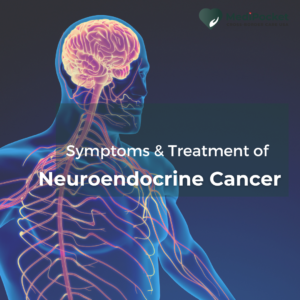Cancer remains one of the most crucial health challenges of our time, with millions of new cases diagnosed annually worldwide. While traditional treatments like chemotherapy, radiation, and surgery have long been the mainstays of cancer care, advancements in medical science have ushered in innovative therapies that offer new hope. Among these, stem cell therapy stands out as a groundbreaking approach, particularly in the United States, where cutting-edge research and advanced medical infrastructure are driving significant progress.
Understanding Stem Cell Therapy
Stem cell therapy involves the use of stem cells to repair, restore, or regenerate damaged tissues and organs. Stem cells are unique in their ability to differentiate into various cell types, making them a powerful tool in medical treatments. In the context of cancer, stem cell therapy can be utilized in several ways, including:
- Bone Marrow Transplantation (BMT): This is the most common form of stem cell therapy for cancer patients, especially those with blood cancers such as leukemia, lymphoma, and multiple myeloma. BMT involves transplanting healthy stem cells to replace damaged or destroyed bone marrow.
- Peripheral Blood Stem Cell Transplantation (PBSCT): Similar to BMT, this procedure involves collecting stem cells from the patient’s bloodstream rather than the bone marrow, offering a less invasive alternative.
- Cord Blood Transplantation: This involves using stem cells extracted from the umbilical cord blood of newborns. These stem cells are highly versatile and less likely to cause immune rejection.
The Revolutionizing Impact of Stem Cell Therapy in Cancer Treatment
1. Enhanced Recovery and Survival Rates
Stem cell therapy has significantly improved the prognosis for many cancer patients. For instance, in blood cancers like leukemia and lymphoma, stem cell transplants can effectively replace diseased bone marrow, leading to remission and, in many cases, long-term survival. Advances in the United States have pushed the boundaries of what’s possible, with ongoing research continuously improving patient outcomes.
2. Reduced Side Effects
Traditional cancer treatments often come with severe side effects, such as hair loss, nausea, and fatigue, due to their impact on healthy cells. Stem cell therapy, particularly targeted therapies, aims to minimize these adverse effects by focusing on repairing and regenerating specific tissues. This leads to better quality of life during and after treatment.
3. Innovative Approaches and Research
The United States is at the forefront of stem cell research, with institutions like the Mayo Clinic, MD Anderson Cancer Center, and Memorial Sloan Kettering Cancer Center leading the way. Researchers are exploring new ways to harness the potential of stem cells, such as combining them with gene therapy to enhance their effectiveness against cancer cells.
4. Personalized Treatment Plans
Stem cell therapy can be tailored to individual patients, providing personalized treatment plans that address the specific type and stage of cancer. This precision medicine approach ensures that patients receive the most effective therapy based on their unique genetic makeup and cancer profile.
5. Future Prospects
The future of stem cell therapy in cancer treatment looks promising. Ongoing clinical trials and research are expanding the applications of stem cells, exploring their use in treating solid tumors, enhancing immune system function, and even preventing cancer recurrence. The integration of artificial intelligence and big data analytics in research is accelerating the discovery of novel stem cell-based therapies.
Advanced Stem Cell Therapy in the USA
The United States is a global leader in the development and application of stem cell therapies for cancer. The country’s advanced medical infrastructure, robust research ecosystem, and significant investment in biotechnology have made it a hub for pioneering treatments. Here are some key factors contributing to the advancement of stem cell therapy in the USA:
- World-Class Research Institutions: Institutions like the Mayo Clinic, MD Anderson Cancer Center, and the National Institutes of Health (NIH) are at the forefront of stem cell research, driving innovations in cancer treatment.
- Cutting-Edge Clinical Trials: The USA hosts numerous clinical trials exploring new stem cell therapies, offering patients access to experimental treatments that are not yet widely available.
- Regulatory Support: The FDA’s supportive regulatory framework facilitates the development and approval of new stem cell therapies, ensuring they meet stringent safety and efficacy standards.
- Collaboration and Innovation: Collaboration between academic institutions, biotechnology companies, and healthcare providers fosters a dynamic environment for innovation, leading to rapid advancements in stem cell therapy.
Conclusion
Stem cell therapy is revolutionizing cancer treatment, offering new hope to patients worldwide. In the United States, advanced research, personalized treatment plans, and cutting-edge clinical trials are driving significant progress in this field. As we continue to unlock the potential of stem cells, the future of cancer treatment looks brighter than ever. For patients seeking the best care, the USA remains a beacon of hope, providing access to the latest and most effective stem cell therapies.
By leveraging the power of stem cells, we are not only improving survival rates but also enhancing the quality of life for cancer patients, bringing us one step closer to a world where cancer is no longer a formidable enemy. With the help of MediPocket USA, access the advanced Stem cell therapy and change the route of your life with Premium Care.










